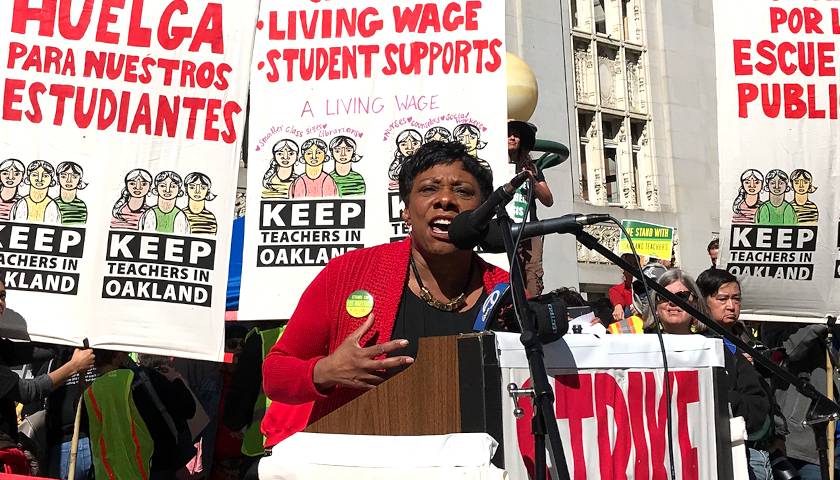by Daniel Payne
Leaders in Western Europe remain committed to continuing in-person instruction for young students — in some cases relaxing restrictions like face mask requirements and social distancing rules — even as caseloads throughout the region continue to explode.
It’s a sharp contrast from many school districts in the United States, including some of the largest and most populous, where governmental authorities and teachers’ unions continue to insist that children be barred from face-to-face instruction, that any in-person learning be accompanied by strict distancing and face covering rules, and that even modest upticks in coronavirus cases should necessitate a complete shutdown of face-to-face learning.
The school reopening debate has been among the most rancorous and prolonged over the course of the protracted COVID-19 crisis. Virtually all school districts in the country shuttered in March and April as state governors and local authorities ordered schoolchildren to switch to remote online instruction for the remainder of the semester.
Many officials have extended those policies well into this semester, with authorities in some cases pledging to continue in-person instruction as long as into next year. Many schools that have reopened, meanwhile, have required students to wear face coverings, keep six feet apart, stay in the same classroom all day, and in some cases even eat lunch without talking.
A school district’s reopening, meanwhile, does not ensure it will remain open going forward. The New York City public school system — which has welcomed students back at staggered intervals over the early fall — has promised that schools will close if the “percent of positive tests in New York City is equal to or greater than 3% using a 7-day rolling average.”
“If we cross this threshold, schools will close,” the city declares.
New Jersey, meanwhile, says it will shut down a school if 2 or more cases are identified within 14 days that occur across multiple classrooms and a clear connection between cases cannot be easily identified.”
In the Los Angeles Unified School District earlier this month, Superintendent Austin Beutner laid out what appeared to be a lengthy road back to in-person instruction.
“Don’t expect to see a decision about a return to school classrooms by students until the case rate in the area is significantly lower and remains there,” Beutner said in an address to the school district earlier this month. (The positivity rate in L.A. County is hovering around 3%, compared to a national rate of 4.5%.)
“Our return-to-school plan has 3 main parts — state of the art health practices at schools, COVID-19 testing for students, staff and family members and the ability to notify and isolate any members of the school community who may have come in contact with the
virus,” Beutner continued.
Students will only head back to school, he said, “as soon as it’s safe and appropriate for them to do so.”
Schools likely to ‘remain fully open to all’
Numerous leaders in Europe, meanwhile, have committed to keeping schools reopened for in-person instruction, though cases in many countries have spiraled upward in recent weeks, at times matching or exceeding the height of the pandemic in the early spring.
France, for instance, is currently registering a seven-day average daily caseload 171% higher than the height of its outbreak in the spring. Cases had been flat there from May until late July before beginning a steep climb.
Yet France last week announced it was loosening its COVID policies governing elementary and primary schools, declaring that classmates of individual students who test positive will “no longer [be] considered contact cases” and will not have to go into quarantine. Students will only have to isolate if three pupils from separate families test positive.
Education Minister Jean-Michel Blanquer said last week that around 2,000 classrooms across the country had been shuttered under the old policies. “We should see the number of shut classes go down,” he said of the new rules. “Less children will be sent home as a precautionary measure.”
The United Kingdom, meanwhile, is also committed to keeping schools open, even though daily caseloads there have now exceeded their earlier peak in April.
“We have set out plans in the Government’s contain framework for local lockdowns,” Department of Education spokeswoman Lauren Carpenter told Just the News, “and [we] are clear that we anticipate that education and childcare will usually remain fully open to all.”
“There may be exceptional circumstances in which some level of restriction to education or childcare is required in a local area,” the U.K. government says in guidelines posted on its website. Among the four “tiers of restriction” the U.K. government will consider implementing in the event of increasing infection rates, just one — the fourth, most severe iteration — mandates widespread remote learning for most students.
The German government was among the first to send children back to school following closures in the spring. About one-tenth of one percent of schools there have gone into quarantine since classes started up again.
German epidemiologists have reportedly found little evidence that the virus spreads in schools there. “The schools are not driving this,” Tobias Kluth, the director of Berlin’s Charité’s Institute for Public Health, told the Washington Post this week.
Kumi Smith, a professor of epidemiology at the University of Minnesota School of Public Health, said observers should consider “the scale of the epidemic” in both the United States and Europe, respectively, while assessing various countries’ decisions to open schools.
“As it stands in these countries, there has been an uptick in Europe, but it’s nowhere near where the U.S. is at in terms of community transmission at a national level,” she said.
“I think it would just be a matter of scaling it in that sense,” she said, warning against “cherry-picking” school districts in the U.S. and comparing them to European countries.
Smith noted that decisions to reopen schools in the U.S. are frequently being made at the local level. “There’s some local areas that are looking at their community-level transmission and making decisions,” she said, noting that administrators are under “huge pressure” to prioritize student academic well-being, parents’ working schedules, and the health of everyone involved.
Public health experts and children’s advocates have been urging authorities for several months to reopen schools, citing the relatively low risk children face from COVID-19 and arguing that school closures pose “significant adverse health and welfare consequences for children,” as the Toronto Hospital for Sick Children said in June.
In July, meanwhile, Centers for Disease Control and Prevention Director Robert Redfield said that, based on the data, school-age children have a literal “one-in-a-million” chance of dying from the coronavirus. Redfield for several months has been stressing the need to re-open schools and bring students back for in-person instruction.
Still, many authorities in the U.S. continue to resist even preliminary moves toward reopening. “We’re not there yet,” Chicago Mayor Lori Lightfoot said this week of in-person instruction. Asked during a virtual town hall meeting this week about the possibility of reopening schools in November, Lightfoot said: “We haven’t made a decision yet whether or not that’s going to be possible.”
Smith pointed out that the potential seasonality of COVID-19 may play a role in school decisions in Europe as the continent moves toward colder weather and less outdoor activities.
“We haven’t really lived through a full winter through COVID yet,” she said. “Epidemiologists are pretty nervous about that.”
European authorities, meanwhile, seem more or less certain that — barring a catastrophic increase in COVID-19 spread there — schools will remain open. Notably, among the European countries that have seen spikes in cases, death rates have risen to nowhere near the levels observed in the early spring.
“There’s no point sending pupils home or even shutting entire schools at the first alert,” French health minister Olivier Véran said earlier this month. “We can’t throw children out if they have a cold.”
– – –
Daniel Payne is a reporter at Just the News.
Photo “Classroom” by Scott Brenner CC BY-ND 2.0.




